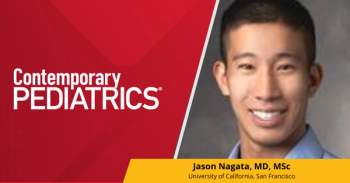
Journal Club: TV, TB, and how to say hello
A review of three articles, about media exposure's link to increased BMI, a better test for tuberculosis, and how parents may be put off if you don't greet them properly.
Are new assays useful for detecting TB?
The test was positive in 17% of the study group, negative in 48%, and indeterminate in 35%. Analysis showed that age younger than 5 years and being immunocompromised were both independently associated with a higher probability of an indeterminate result. In children who were not immunocompromised, the likelihood of an indeterminate test result was inversely correlated with age, decreasing by 13% for each additional year of age (Haustein T et al: Pediatr Infect Dis J 2009;28:669).
These tests are based on detection of interferon gamma production by mononuclear cells after exposure to antigens produced by M tuberculosis. They offer a potentially useful tool for making the often confusing diagnosis of both tuberculosis infection and disease.
One advantage of these tests over the traditional tuberculin skin test is that bacille Calmette-Guérin and most nontuberculous mycobacteria do not generate the antigens necessary to cause a positive test. The tests now available include a positive control: In other words, if the control is not positive, the tested sample may be inadequate, or the patient may not be able to mount the appropriate response even in the presence of these TB antigens. These authors show that indeterminant tests such as these are more common in the youngest patients and in those with immune deficiency, the very patients who are most likely to develop TB disease after infection.
The 2009 Red Book offers a clear explanation of the current role of these assays in detection of TB. As more information is obtained, that role will likely increase. -MB
PARENTS EXPECT TO BE GREETED BY NAME
Overall, 83% of the adults wanted the doctor to shake hands, and most did (70% of residents, 66% of attendings). Even more parents, 87%, wanted their physicians to address them by name, but only 14% of residents and 24% of attendings did so. Physicians did best in meeting expectations by introducing themselves at encounters, with 84% of residents and 93% of attendings extending this courtesy (Amer A et al Clin Pediatr 2009;48:720).
COMMENTARY
Name tags for everyone. In 9% of encounters, physicians incorrectly addressed the parent by using the child's last name. I wonder how often physicians fail to call the parent by name so as to avoid this error. If that's the case, we need to display parents' names prominently on patient charts, on appointment lists, and in the hospitalized child's room. -MB
Newsletter
Access practical, evidence-based guidance to support better care for our youngest patients. Join our email list for the latest clinical updates.

![Jodi Gilman, PhD, on cumulative prenatal adversity linked to adolescent mental health risk Document Jodi Gilman, PhD, on cumulative prenatal adversity linked to adolescent mental health risk Live? Do you want this document to be visible online? Scheduled Publishing Exclude From Home Page Do you want this document to be excluded from home page? Exclude From Infinite Scroll Do you want this document to be excluded from infinite scroll? Disable Related Content Remove related content from bottom of article. Password Protection? Do you want this gate this document? (If so, switch this on, set 'Live?' status on and specify password below.) Hide Comments [Experiment] Comments are visible by default. To hide them for this article toggle this switch to the on position. Show Social Share Buttons? Do you want this document to have the social share icons? Healthcare Professional Check Is Gated [DEV Only]Do you want to require login to view this? Password Password required to pass the gating above. Title Jodi Gilman, PhD, on cumulative prenatal adversity linked to adolescent mental health risk URL Unique identifier for this document. (Do not change after publishing) jodi-gilman-phd-on-cumulative-prenatal-adversity-linked-to-adolescent-mental-health-risk Canonical URL Canonical URL for this document. Publish Date Documents are usually sorted DESC using this field. NOTE: latency may cause article to publish a few minutes ahead of prepared time 2026-01-19 11:52 Updated On Add an updated date if the article has been updated after the initial publish date. e.g. 2026-01-19 11:50 Article Type News Display Label Author Jodi Gilman, Phd > Gilman, Jodi Author Fact Check Assign authors who fact checked the article. Morgan Ebert, Managing Editor > Ebert, Morgan Content Category Articles Content Placement News > Mental, Behavioral and Development Health > Clinical AD Targeting Group Put the value only when the document group is sold and require targeting enforcement. Type to search Document Group Mapping Now you can assign multiple document group to an article. No items Content Group Assign a content group to this document for ad targeting. Type to search Issue Association Please choose an issue to associate this document Type to search Issue Section Please choose a section/department head if it exists Type to search Filter Please choose a filter if required Type to search Page Number Keywords (SEO) Enter tag and press ENTER… Display summary on top of article? Do you want display summary on top of article? Summary Description for Google and other search engines; AI generated summary currently not supporting videos. Cumulative prenatal adversities were linked to higher adolescent mental health risk, highlighting the importance of prenatal history and early clinical monitoring. Abstract Body *********************************************************************************************************** Please include at least one image/figure in the article body for SEO and compliance purposes ***********************************************************************************************************](https://cdn.sanity.io/images/0vv8moc6/contpeds/e6097cb5e6d6c028c0d4e9efd069e69fdab6d00b-1200x628.png?w=350&fit=crop&auto=format)






